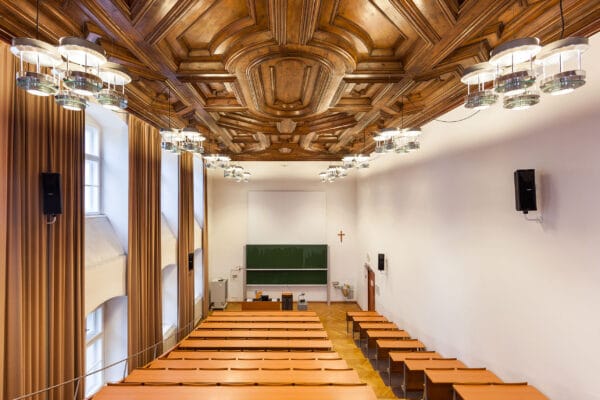
NAME:
Theologie - HS 1
BUILDING:
Theologie
FLOOR:
1
TYPE:
Lecture Hall
CAPACITY:
126
ACCESS:
Only Participants
EQUIPMENT:
Beamer, PC, WLAN (Eduroam), Overhead, Blackboard, Handicapped Accessible, LAN, Microphones, Sound System, Speaker Desk
High-elevation springs represent unique ecosystems and key ecological hotspots, that provide critical insights into hydrology, biodiversity, and climate change impacts. The Springs Above the Tree-line (SAT) project is an international, collaborative initiative aimed at collecting and analysing scientific data from high-elevation, remote mountain springs. The project focuses on hydrochemistry, diatoms, and vegetation (including bryophytes and cover values) to assess ecological patterns across multiple mountain regions, creating a network dedicated to long-term ecological monitoring and comparative analyses of mountain springs. Fieldwork began in 2023 with the sampling of five Arctic springs in Norway (Tromsø) and five springs in the northern Apennines. In summer 2024, five additional springs in the southeastern Alps were studied in the Adamello-Brenta Nature Park; in summer 2025 sampling will expand the dataset further, with confirmed sites in Spain, and additional potential sites in the western and eastern Carpathians, North America (Arizona) and Himalaya. The target sites in each SAT area include five high-elevation springs located above the natural tree line, with a focus on rheocrenes and rheohelocrenes characterized by small discharges (typically <1 L s⁻¹) and electrical conductivity between 25 and 250 µS cm⁻¹. The parameters measured in the field are pH, electrical conductivity, discharge, water temperature, alkalinity, and oxygen levels. The SAT project provides valuable comparative data on high-mountain spring ecosystems, contributing to a better understanding of biodiversity, hydrology, and climate-driven changes in these fragile environments. By fostering an open, cooperative research network, SAT aims to advance knowledge on high-elevation freshwater ecosystems ecology while promoting long-term ecological monitoring across diverse mountain landscapes.
